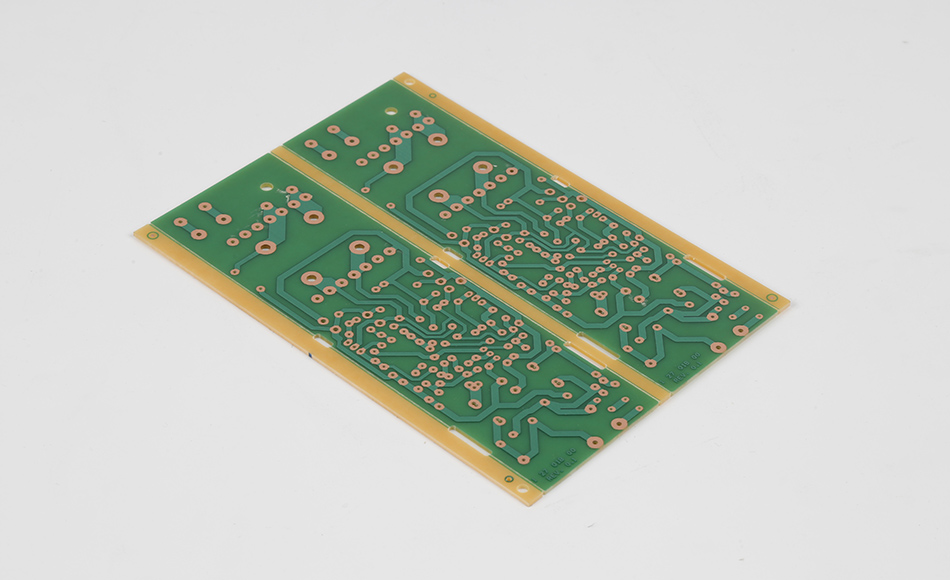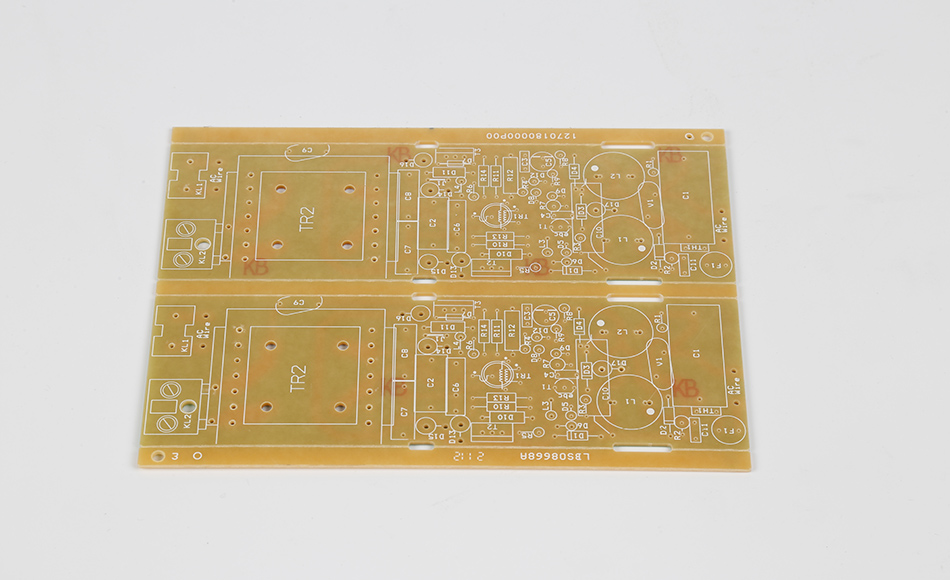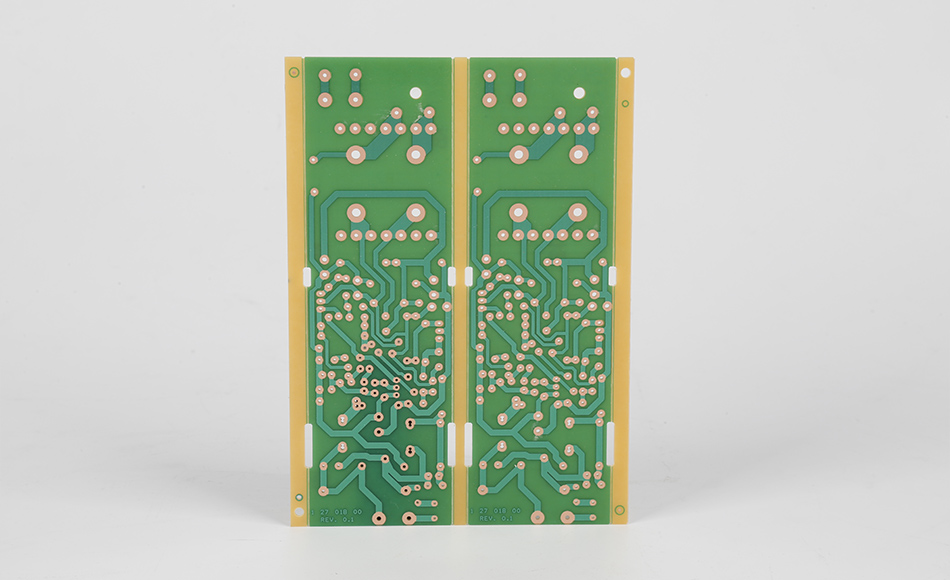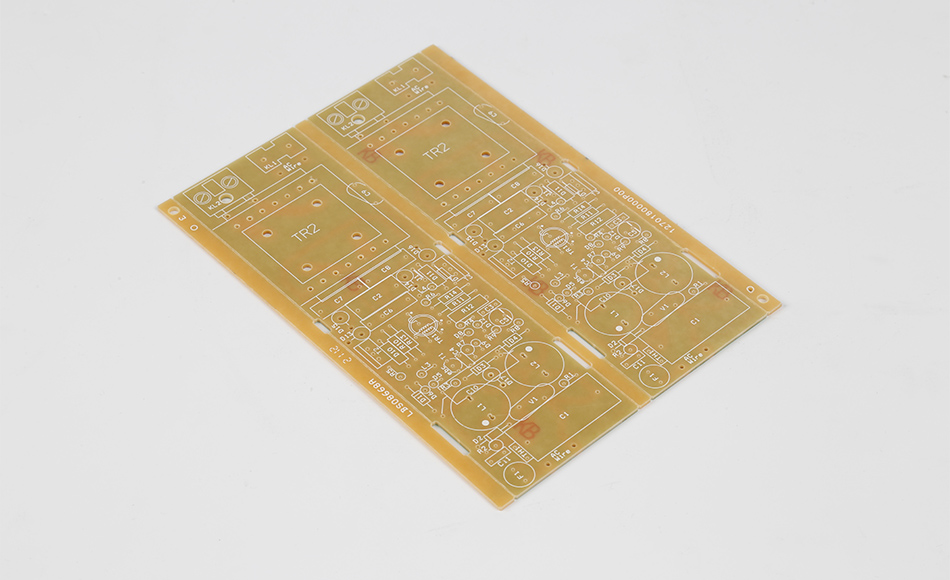-
- PCB TYPE
- PRINTED CIRCUIT BOARD PROTOTYPE ALUMINUM PRINTED CIRCUIT BOARD R&F PCB FPC HIGH FREQUENCY PCB HIGH-TG PCB HEAVY COPPER PCB HDI PCB PCB FOR LIGHTING METAL CORE PCB
time:Aug 21. 2025, 11:59:44
The High Thermal CEM3 PCB Substrate emerges as a transformative solution in the electronics industry, addressing the growing demand for efficient heat management in devices that operate beyond the capabilities of standard CEM3 but do not require the premium cost of high-end materials like FR4 or metal-core substrates. Unlike traditional CEM3, which struggles with moderate heat loads, high thermal variants are engineered to dissipate thermal energy more effectively through innovative material modifications and structural optimizations. This advancement positions high thermal CEM3 as a versatile choice for applications ranging from industrial sensors to consumer electronics, where reliable performance under sustained heat generation is critical. This article delves into the material engineering behind high thermal CEM3, its performance advantages, manufacturing breakthroughs, and real-world implementations, highlighting how it redefines thermal management in mid-tier electronics.
High thermal CEM3 represents a significant leap from standard CEM3, driven by the need to support increasingly power-dense components without sacrificing cost or manufacturability. Its development stems from recognizing that many modern devices—such as smart home controllers and small motor drivers—generate more heat than standard CEM3 can handle but do not warrant the expense of specialized thermal substrates.
Standard CEM3, composed of a non-woven glass core, woven glass outer layers, and epoxy resin, typically offers thermal conductivity in the range of 0.4–0.5W/mK. While sufficient for low-power devices (e.g., remote controls), this is inadequate for components that operate at 10–100W, where excess heat can degrade performance or shorten lifespan. High thermal CEM3 addresses this gap by enhancing heat transfer through targeted material adjustments, achieving thermal conductivity levels that rival some mid-range FR4 variants but at a fraction of the cost.
This evolution is not merely incremental; it reflects a shift in how manufacturers approach thermal management. Instead of over-engineering with expensive materials, high thermal CEM3 provides a
tailored solution that balances performance, cost, and practicality, making it accessible to a broad range of industries.

The enhanced thermal performance of high thermal CEM3 is rooted in deliberate modifications to its composition and structure, each designed to facilitate more efficient heat transfer:
High thermal CEM3 incorporates thermally conductive fillers—such as aluminum nitride, boron nitride, or silicon carbide—into the epoxy resin matrix. These fillers are chosen for their ability to form continuous thermal pathways through the resin, which is inherently insulating. Unlike standard CEM3, which may use minimal or no conductive fillers, high thermal variants optimize filler size, shape, and concentration to maximize heat transfer without compromising electrical insulation or mechanical strength.
The fillers are typically micron-sized (1–5μm) to balance dispersion and thermal pathway formation. Larger fillers could create weak points or disrupt the resin’s flow during manufacturing, while smaller nanoparticles (though effective) are more costly and harder to distribute evenly. By using a blend of filler sizes, manufacturers ensure that thermal pathways are both continuous and robust, allowing heat to spread rapidly across the substrate.
The epoxy resin in high thermal CEM3 is modified to improve its intrinsic thermal properties. This includes adjusting the resin’s cross-link density to reduce phonon scattering—the primary mechanism by which heat is lost in polymers. A more ordered molecular structure allows heat-carrying phonons to travel longer distances, enhancing thermal conductivity. Additionally, the resin may include heat-resistant additives that prevent degradation at elevated temperatures, ensuring the substrate remains stable even when exposed to sustained heat.
The interface between glass fibers and epoxy resin is a critical bottleneck for heat transfer in standard CEM3, as air gaps and weak bonding create thermal resistance. High thermal CEM3 uses silane coupling agents to strengthen this interface, forming chemical bonds that reduce resistance and allow heat to flow more freely from the resin to the glass fibers. The fibers themselves, being more thermally conductive than the resin, act as secondary heat-dissipating channels, distributing heat across the substrate more evenly.

High thermal CEM3 offers a range of benefits that make it indispensable in applications where heat management is critical but cost remains a concern:
The primary advantage of high thermal CEM3 is its ability to dissipate heat 50–80% more effectively than standard CEM3. This reduces operating temperatures in critical components—such as microcontrollers and power transistors—by 10–20°C, significantly extending their lifespan and reducing the risk of thermal throttling. In LED drivers, for example, this temperature reduction can double the lifespan of electrolytic capacitors, a common failure point in such devices.
High thermal CEM3 enables devices to operate at higher power densities without exceeding safe temperature limits. This allows for more compact designs, as engineers can reduce the size of heat sinks or eliminate them entirely. In smart home hubs, for instance, this means integrating more processing power into the same form factor, supporting advanced features like real-time data analytics and AI-driven automation.
Unlike some thermal substrates that sacrifice mechanical strength for conductivity, high thermal CEM3 retains CEM3’s inherent robustness. It maintains excellent flexural strength and resistance to delamination, even under thermal cycling. Additionally, its electrical properties—including dielectric strength and insulation resistance—remain comparable to standard CEM3, ensuring compatibility with a wide range of components and operating voltages.
High thermal CEM3 costs 15–25% more than standard CEM3 but is 30–50% cheaper than high-performance FR4 or metal-core PCBs (MCPCBs) with similar thermal performance. This makes it an ideal choice for mid-range devices where premium materials are unnecessary but improved thermal management is essential. For high-volume manufacturers—such as those producing consumer electronics—this cost difference translates to significant savings without compromising quality.

Producing high thermal CEM3 requires careful process control to ensure consistent thermal performance while maintaining compatibility with standard PCB manufacturing workflows:
Achieving uniform filler distribution is critical, as agglomerations can create hot spots or weaken the substrate. Manufacturers use high-shear mixing and ultrasonic dispersion techniques to break up filler clusters and ensure even distribution throughout the resin. In-line monitoring systems—such as laser particle analyzers—verify dispersion quality, adjusting mixing parameters in real time to prevent defects.
The addition of conductive fillers increases the resin’s viscosity, making it harder to impregnate the glass fibers during lamination. To address this, manufacturers adjust lamination parameters: increasing temperature by 5–10°C to reduce viscosity, extending dwell time to ensure full fiber saturation, and optimizing pressure to prevent air entrapment. These adjustments ensure the final substrate has uniform density and thermal conductivity across its surface.
Standard quality checks for CEM3—such as dielectric testing and mechanical strength evaluations—are augmented with thermal performance verification. Techniques like the guarded hot plate method measure thermal conductivity at multiple points across each batch, ensuring it meets the high thermal specification. Infrared thermography is also used to map heat distribution under simulated operating conditions, identifying any localized defects that could compromise performance.
A key advantage of high thermal CEM3 is its compatibility with existing PCB manufacturing equipment and processes. It can be drilled, etched, and soldered using standard techniques, eliminating the need for specialized tooling or training. This compatibility reduces barriers to adoption, allowing manufacturers to integrate high thermal CEM3 into their production lines with minimal disruption.

High thermal CEM3 is finding use in a wide range of applications where moderate heat generation demands better thermal management than standard CEM3 can provide:
Motor Controllers: Small AC/DC motor controllers in conveyor systems and robotics generate steady heat during operation. High thermal CEM3 dissipates this heat, ensuring consistent performance and reducing downtime due to overheating.
Sensor Nodes: Industrial sensors deployed in high-temperature environments (e.g., factory floors) rely on high thermal CEM3 to maintain accuracy, as excessive heat can drift sensor readings.
Smart Home Devices: Controllers for smart thermostats, security systems, and home appliances integrate multiple high-power components (e.g., wireless modules, processors). High thermal CEM3 prevents overheating, ensuring reliable connectivity and responsive performance.
Gaming Accessories: High-performance gaming mice, keyboards, and headsets with RGB lighting and advanced sensors generate heat that can affect user comfort. High thermal CEM3 keeps these devices cool during extended use.
In-Cabin Controls: Infotainment systems and climate control modules in vehicles generate heat from processors and power management components. High thermal CEM3 ensures these systems operate reliably despite temperature swings in the cabin.
LED Lighting: Automotive LED headlights and interior lighting use high thermal CEM3 to manage heat from LEDs, extending their lifespan and maintaining brightness.
Solar Micro-Inverters: Small-scale solar inverters convert DC power from panels to AC, generating heat during conversion. High thermal CEM3 dissipates this heat, improving efficiency and reliability in outdoor installations.
Battery Management Systems: BMS for home energy storage systems use high thermal CEM3 to monitor battery health, ensuring stable operation even during high-charge/discharge cycles.

High thermal CEM3 occupies a unique position in the substrate market, offering a balance of performance and cost that distinguishes it from alternatives:
Standard CEM3 is sufficient for low-power devices but fails in applications with moderate heat generation. High thermal CEM3 provides superior heat dissipation, making it suitable for 10–100W devices while retaining CEM3’s cost and manufacturing benefits.
High-performance FR4 variants offer similar thermal conductivity but at a higher cost. For example, a 30W LED driver using high thermal CEM3 performs as well as one using high-performance FR4 but at 30% lower material cost, making it more attractive for mass production.
MCPCBs excel in high-power applications (100+W) but are heavier, more expensive, and harder to machine. High thermal CEM3 is a cost-effective alternative for devices under 100W, such as 50W LED streetlights, providing sufficient cooling without the added expense.
Ceramic substrates (e.g., alumina) offer exceptional thermal conductivity but are brittle and expensive, limiting their use to specialized applications like power electronics. High thermal CEM3 is more durable and affordable, making it practical for mainstream devices.
Ongoing research and development are pushing the boundaries of high thermal CEM3, expanding its capabilities and applications:
Manufacturers are exploring bio-based and recycled fillers—such as rice husk ash and industrial byproducts—to reduce the environmental impact of high thermal CEM3. These fillers offer comparable thermal performance to synthetic alternatives while lowering carbon footprints, aligning with the industry’s shift toward sustainability.
Future high thermal CEM3 variants may integrate additives that provide additional benefits, such as flame resistance or improved EMI shielding, without compromising thermal conductivity. This would expand its use in applications with stringent safety or electromagnetic compatibility requirements.
Combining high thermal CEM3 with thin layers of thermally conductive materials (e.g., graphite or copper) could create hybrid substrates that offer enhanced lateral heat spreading. These designs would be particularly valuable for devices with concentrated heat sources, such as power transistors, ensuring uniform temperature distribution.
High Thermal CEM3 PCB Substrate represents a critical innovation in mid-tier electronics, proving that effective thermal management does not require premium materials. By leveraging advanced fillers, optimized resin formulations, and improved manufacturing processes, high thermal CEM3 delivers superior heat dissipation compared to standard CEM3 while remaining cost-effective and compatible with existing production workflows. Its versatility makes it indispensable in applications ranging from industrial automation to consumer electronics, where reliable performance under moderate heat loads is essential.
As devices continue to shrink and integrate more powerful components, high thermal CEM3 will play an increasingly important role in enabling compact, efficient designs. For engineers and manufacturers, it offers a strategic balance of performance, cost, and practicality—proof that targeted material innovations can redefine what mid-range substrates are capable of achieving. In a market where efficiency and affordability are paramount, high thermal CEM3 stands out as a solution that meets both present needs and future challenges.

Got project ready to assembly? Contact us: info@apollopcb.com



We're not around but we still want to hear from you! Leave us a note:

Leave Message to APOLLOPCB
